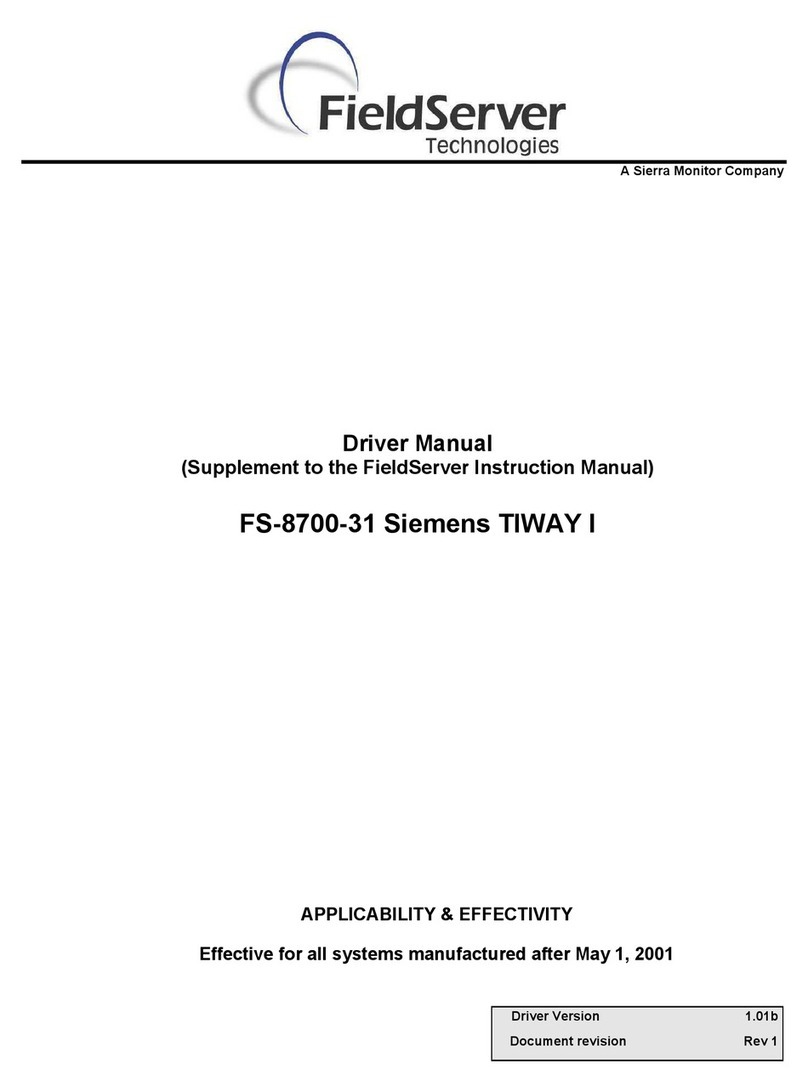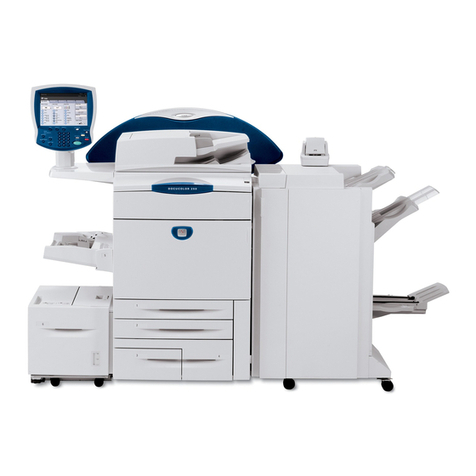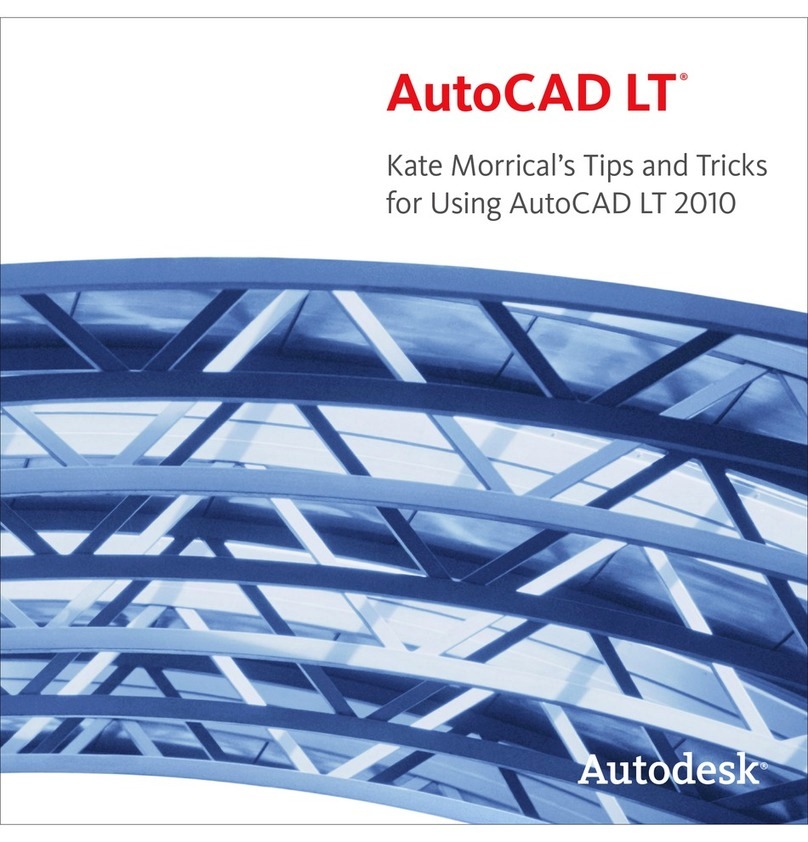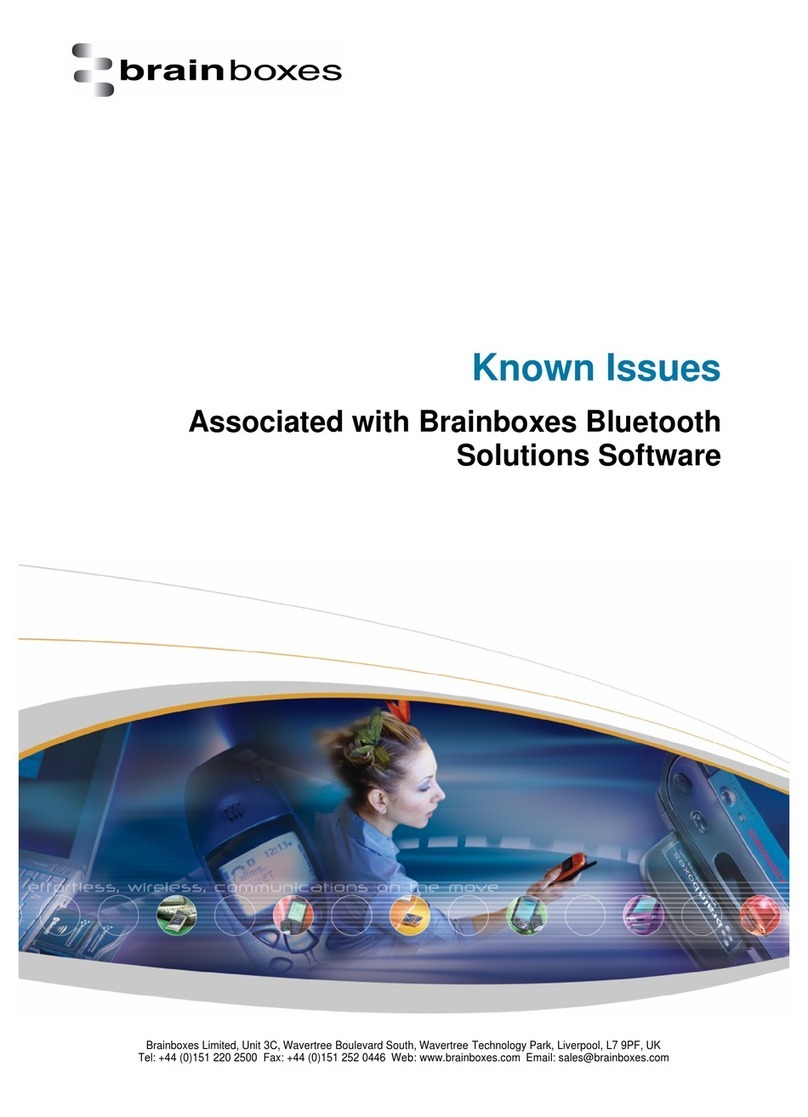vLinn LM-1 User manual


LM-1 DRUMS
www.alyjameslab.com
USER MANUAL 1.0
BY
Aly James
©2014-2015 ALYJAMESLAB

TABLE OF CONTENTS
INTRODUCTION............................................................................................................................. 3
INSTALLATION............................................................................................................................... 6
CONTROL PANELS ......................................................................................................................... 9
THE AM6070 DAC.........................................................................................................................11
SAMPLE TUNING..........................................................................................................................15
THE HIHAT CASE...........................................................................................................................18
MAIN PANEL................................................................................................................................19
CEM FILTERS ................................................................................................................................19
SETTINGS.....................................................................................................................................22
EPROM LOADING.........................................................................................................................24
PRESETS IMPORT / EXPORT...........................................................................................................27
MIDI AUTOMATION......................................................................................................................28
LM-1 SEQUENCER ........................................................................................................................29
HIDDEN SECRETS..........................................................................................................................31
LINKS...........................................................................................................................................32
DISCLAIMER & LICENCE AGREEMENT ............................................................................................33

INTRODUCTION
My name is Aly James;
French steam funky musician, composer and creator of strange musical DIY
devices and software.
I was planning for a long time to make an accurate Linn LM-1 VST dedicating
to the 1st Sample Based Drum Machine in History, mainly because I have never
been happy with packs of samples coming from different recording chains,
lacks of control over the pitch and all that makes the unique funky sound of
that legendary drum computer made by Roger Linn.
The Linn was THE killer drum machine in town back in the 80’s; it was also the first that include real
drum samples!
The Linn LM-1 Drum Computerwas created by Roger Linn. He used samples of acousticdrum sounds
recorded on the fly with some basic hardware he made at that time. The fact that they were
recorded raw with a custom made ADC, ignoring the basis of digital recording makes them cut better
in a mix than anything available at the time, they sounded so great that they become analternative
to the analog drum sounds of the 80's drum machines.. To this day the unique sound of the LM-1 is
highly regarded and only using samples of an LM-1 output cannot reproduce the wide range of
sounds this machine can produce. The DAC in use in here and the whole circuitry stands next to the
samples characters in that unique sounding team.
The LM-1 is an historical piece of gear that has a place in the sound of the 80's era.
Only around 500 of these things are out there so don't counton finding aworking one easily or for
cheap. It has been used by majoracts like:
Prince, Phil Collins, Thompson Twins, StevieWonder, Gary Numan, Depeche Mode, The Human
League, Jean-MichelJarre, Vangelis, John Carpenter, Todd Rundgren,TheArt of Noise etc... The
Machine was made by a musician for musicians and I tried to stick to that standard. So as there were
no accurate VSTfor that legend out there...
I had to make the VLINN!
________________________________________________________________________________
Personally, I grow up listening alot of Funk Music and especially the Minneapolis Funk scene,The
LM-1, Linndrum & DMX Drum Machines sound were preeminent and were ahuge part of that
particularsound. The fact that the LM-1 had multiple outputs screamed for experimentation and it

wasn’t uncommon to send each drumsounds to fx units or guitarpedals. The usage of algorithmic
gatedreverbsof that era was also part of the sound (think AMS RMX16 or Eventide harmonizer).
Most of the rare LM-1 machines were usually modified to suit the artist needs, increasing pitch
range, adding external triggers & changing stock EPROMS samples wasn’t uncommon. Still, the
characteristic stock sounds of the Bass, Snare, Claps, Rim shotand Hihat were always present.
The coolest thing was that each and every sounds of the LM-1 were tunable and as they were stored
in EPROMS chips, they can be replaced by other EPROMS with different orcustommade samples.
The Linn LM-1 was controlled by a Z80 processorand featured a built in sequencer. An urban legend
goes on fora long time about the LM-1 having a special groove and even a kind of secret
randomization builtin…This is plain false, as Roger Linn himself have recently stated and debunk the
myth, the LM-1 groove only comes from the low resolution of its sequencer, which is, 48PPQN (see
LM-1 Sequencersection)
This emulation is based on reverse engineering and old datasheets; it uses a C++ custom corewith
modeled AM6070 DAC, Oscillators, counters, OPAMPS &Filters.
The product has been assembled through theSYNTHEDITframework using thevery last version,
Mostly custom C++ coding and some third party licensed codewhere nothing fancy wereneeded. It
will be ported to OSX at some point in the future.
________________________________________________________________________________
Thanks to all the nice people that started to use VLINN and support my projects and to proud
owners of original Linn LM-1 Units who havesent me some recordings to make tests.
A special thanks to Roger Linn (LM-1 Creator) & Paul J Whites (Electrongate.com).

Full Credits & Thanks can be accessed on the VLINN GUI panel.
Mainly,
VLINN can be triggered via MIDI following mostly the GM MIDI Drums mapping.
Each trigger will engage a binary counter that will run at the speed of an oscillator which
pitches is fixed by the tune knob setting. Byte after byte, the EPROM content will be read
and the output will be decoded by the emulated AM6070 DAC. The output of the DAC is
amplified by an OPAMP and will be filtered in some way differently depending on the voice.
The counter will read all the EPROM content even if you release the key before the end.
A main mixer is used to set the volume of each voice before it hits the output stage.
The Linn LM-1 featured panning switches that are not needed anymore because we have
separate outputs that will be mixed and panned inside a DAW; hence there is no panning in
VLINN VST.
Each voice has its own tune knob that will control the speed of the EPROM data reading, the
range available is 978 Hz – 44092 Hz which correspond to a real mod you can apply to the
Linn LM-1 to increase the pitch range, stock was 12048 Hz – 30303 Hz). (See Sample Tuning.)
Seven of the stock LM-1 EPROMS can be replaced by external compatible content and an
additional voice can also be used. This opens up to Linndrum sounds (often called LM-2),
DMX, Drumtracks etc… and even your own created EPROM content (See EPROM Loading.)
Basic MIDI implementation:
MIDI IN:
VLINN can receive any MIDI CH as main source for triggers.
It can be triggered with a standard MIDI Keyboard/Pads or even a MIDI Drum Kit.
The mapping follows almost the same mapping as GM MIDI Standard.
Notethat most DAW can convert incoming MIDI notes to another if needed and that most of the
hardwareMIDI pads can be assigned to any MIDI notes.
Bass – MIDI notes 35, 36
Conga High – MIDI note 49
Snare – MIDI notes 38, 40
Conga Low – MIDI note 50
Hihat Closed – MIDI notes 42, 44
Claps – MIDI note 39
Hihat Open – MIDI note 46
RimShot – MIDI note 37
Cowbell – MIDI note 56
Tambourine – MIDI note 54
Tom High – MIDI notes 41, 43, 45
Cabasa – MIDI note 51
Tom Low – MIDI notes 47, 48
Additional Custom Voice – MIDI note ??

INSTALLATION
COMPATIBILITY
VLINN isa Windows 32Bit VST Instrument foruse with MIDI capable DAWs.
RUN on 32/64 Bit Systems.
If you want to use it with a 64bit DAW you can use JBridge or internal DAW Bridge.
INSTALL VST
1.Decompress the downloaded archive file
2. Copy the entire Folder VLINN to your VSTPLUGINS folder
3. Load it in your DAW
INSTALL STANDALONE
1.Decompress the downloaded archive file
2. Copy the entire Folder VLINN_STANDALONE where you want
3. Simply RUN VLINN.exe

State of VLINN current features
WIN 32 VST runs on 32/64Bit Systems and it is multicore compatible.
HIGH QUALITY GUI
(Different panels for controls etc...)
INSTANT UPDATE FOR ALL CONTROLS
FULL MIDI AUTOMATION
With midi learn (rightclickto assign MIDI)
AM6070 MODELED REAL TIME DAC DECODING
Following the exact datasheet decodetable for 8bit companded incoming DATA.
HIHAT DATA LOOPING & VCA
The LM-1 Hihat circuitry was pretty unique, the hihatproms were read constantly in a loop while
only a VCA was triggered, forclosed hihatthe circuitry had the ability to discharge the current
through an additional way based on the decay pot setting. This basically makes the hihatsounding
different on every hit.
CEM 3320 Filters
Unlike the very first produced LM-1, some Voices with Bassfrequency contentwere filtered to
minimize the remaining8bitnoise, using a VCF configured as a 4 poles low pass filterwith no
resonance. The CV frequency of the VCF was shaped by the circuitry in a way that lets the transients
pass through relatively unfiltered. The VLINN lets you finetune the CV pulse or completely bypass
the filter, this is useful when a voice is tuned very low orif you want to replace a "Bass" slot with
another EPROM that doesn't require filtering.
SEPARATE PITCH TUNING
Thisis one of the coolestfeatures of the LM-1, letting you tune any voice to a particularfrequency
for a wide range of sounds.
The PROMS data were read one byte at the time by a counterwhich speed was controlled by a
relatively stable oscillator, the counterreading speed could then be affected by the externaltuning
pots in a limited range, +or - 1 Octave.
This tuning range can be tweaked and the VLINN provides a useful wide range of pitch from 1000
Hz to 44100 Hz and anything in between.
(Stock setting range was 12048 – 30303 Hz. See Sample Tuning.)

SEPARATE OUTPUTS
The LM-1 features separate outputs forevery voices, so as the VLINN.
You can choose from ALL to 1 Stereo Channel orSeparate Stereo Channels for each voice.
VELOCITY CONTROL
You can limityourselftoonly2velocity levels oruse the full range of MIDI velocityforconvenience.
GUI & AUTOMATION
The GUI features the original triggerbuttons for kick listening and controls over every aspectof the
Drum Machine, most of the parameters like volume and pitch knobs can be MIDI learned and
controlled by an external MIDI Hardware.
LOADING EXTERNAL EPROMS DATA
The VLINN provides the ability toreplace some voices with external compatible 8bit companded
EPROM data, which opens up the machine to LINNDRUM (LM-2) samples, LINN 9000, DMX, DX,
DRUMTRACKS etc... Even load your own custom made. You can switch between customloaded and
stock EPROMS on the fly.
VLINN supports the following type and size EPROMS binaries (.bin)
2716(2048_Bytes) 2K
2732(4096_Bytes) 4K
2764(8192_Bytes) 8K
27128(16384_Bytes) 16K
27256(32768_Bytes) 32K
LOAD & SAVE FULL PATCH & BANKS in FXB/FXP

CONTROL PANELS
Overview
VLINN GUI INTERFACE is pretty straight forward; it stores the different parameters on different
panels.
The main sliders on the mixer set the volume for each voice.
The Tuning knobs set the pitch (sample rate) for each voice; you can also type in the precise pitch in
Hz manually by clicking on the number itself.
The Hihat horizontal slider to the left bottom of the GUI sets the decay value for the closed hihat
circuitry.
You can also trigger a voice by clicking on the corresponding drum pad, some of them have two
velocity values available some not, and hence the doublepads on Bass, Snare, Hihat, Tamb & Cabasa.
Toms & Congas pads trigger either the high or low voice.
Note that the high Tom or Conga can be tuned lower than the low corresponding voice; this is
basically just a name to differentiate the two voices.
Once a voice is triggered a red LED indicates the status.
These are the main panels than can be reached by the panel buttons to the left:
PANELS:
MAIN: Access to the Mixer Board.
CEMS: Access to the filters settings of the CEM 3320 chip for BASS, TOMS & CONGAS voices.
PROM Access to the EPROMS configuration panel.
SETS Access to settings like velocity handling and voice output routing, also displays the binary
counters for each EPROM in real-time.
One is blank for future updates and extended features…

Right click on a knob, button orslider will open a midi learn assign menu. Ctrl click + moveallow fine
tuning.

THE AM6070 DAC

The AM6070 DAC which is used for decoding every LM-1 voices to a linear voltage provides a 15-
segment linear approximation to the Bell System µ-255 companding law. The law is implemented by
using three bits to select one of eight binarily-relatedchords(orsegments) andfourbitstoselect one
of sixteen linearly-related steps within each chord. A sign bit determines signal polarity and an
encode/decode input determines the mode of operation.
It was a popular choice for 80s Pro-Audio gear. The companding law gave the 8-bit sounds 12-bit
performance.
At that time, memory was pretty expensive and storing digital data in a tiny space was the way to
go. The LM-1 samples were stored in µ-255 companded format in 8-bit, this is the main task of the
AM6070 to turn this digital encoded data into an analog voltage byte after byte.
If you try to importa raw binary EPROM image in for example an audio editor like Audacity you will
end up with a bunch of noise because companded format is not linear, it needs to be decoded first.
Basically, the DAC holds a constant value until the next sample come s in. To be theoretically proper,
the extrahigherfrequency stuff is supposed to be removed by a reconstruction filter, resulting in a
smooth signal and correctly reproduced spectrum. But vintage digitalhardware don't do this (or
badly), which instead results in a bright, gritty sound.

Modern sample playback techniques, which use phase accumulators and high quality interpolation,
do a pretty good job of producing the "correct" signal, but this doesn't have a gritty vintage sound
because the image frequenciesaren'tthere. The result is that low resolution samples just sound
dull.
This is particularly the case on the LM-1 when you lower the sample pitch; if you import a sample of a
Linn LM-1 in a modern software or samplerand try to pitch it down, it will not sound the same and,
depending on the interpolation method, will soundreallyless bright and nasty.
Keeping the same gritty 8-bit sound at any pitch was very important for VLINN VST to produce an
accurate output.
Here is a comparison between a down-pitched LM-1 Claps sample at 13000 Hz in a modern audio
editor VS a 13000 Hz tuned claps in VLINN VST, among the differences, one is clearly visible, one
really lacks high frequency content.
The graphic ranges from 0Hz to 22050Hz.
In VLINN VSTlike on the hardware, this process happens in real time as byte are coming to the DAC
at the emulated XR2206 (Oscillator Clock) speed.

The exact decoder output table from the AM6070 Datasheet has been use in the VLINN Code for
accuracy.
The fact that the VLINN decodes the EPROMcontent in real time givesitthe ability to import EPROM
binary images as a replacement for certain stock voices, like you could do on a real LM-1.(See EPROM
Loading.)

SAMPLE TUNING
This is one of the main exciting features of the Linn LM-1, unlike its successor the Linndrum, the
LM-1 had a tuning knob per voice, for ALL the voices.
How the system works is not too hard to understand, a monolithic function generator chip XR2206
was used as a clock source for EPROM content reading. The XR2206 output frequency will determine
the frequency at which the EPROM content will be read (speed of the counter chip) hence the
sample rate.
XR2206 Datasheet tell us that the frequency is determined by the external timing capacitor across
pin 5 & 6 and the timing resistor. The LM-1 used R1 & R2 (a potentiometer) to set the value of the
timing resistance. This configuration is the same for each voice.

Here you can see a part of an LM-1 schematics that shows how the XR2206 is connected and what
values were used for the timing capacitor & timing resistor(s) for the Cabasa voice.
Following the datasheet we know that frequency is given as: f0 = 1/RC Hz

Basically on the LM-1 every voice was set like this:
Timing Capacitor C = 0.01µf (5%)
Timing Resistor R = R1 + R2
R1= 3.3K
R2= 0 to 5K (which is a 5K pot)
With this particularsetting this gives us the followingminimum and maximum sample rate fora voice
on stock configuration:
MAX = 1/0.000033 = 30303 Hz
MIN = 1/0.0000833 = 12005 Hz
Quick modifications toincrease the tune range were easy, for example: replacing the 5K pot by a 10K
pot gives a lower minimum of 7512 Hz.
This table shows the values I used for the VLINN VST range. You can do the same on a real LM-1
simply by replacing potentiometers and resistors by the values in this table I made.
So you are able to set the tuning frequency from 978 Hz to 44092 Hz
in VLINN VST, this has been set to 1000 Hz to 44100 Hz for
convenience.
Notethata common usagein recording studios was to use the vary-speed on tape recorder machine
to also change the pitch while recording or playing… Get yourself a good multi track K7 Recorder for
cheap and experiment

THE HIHAT CASE
The LM-1 Hihat circuitry was pretty unique!
Contrary to the other voices, the hihat proms were read constantly in a loop,the closed or open
triggered hihat then fires a VCA envelope thatwill be applied differently on the output.
For closed hihat the circuitry had the ability todischarge the current through an additional way based
on the decay potentiometer setting. This basically makes the hihat sounding different on every hit
and kind of givesita live feel. The LM-1seems to be the only drum machine of that time to do this
clevertrick that way, even the Linndrum doesn’t had it.
Thisdischarge followingaclassicnatural Decibel likecurve…

MAIN PANEL
Each voice has a volume level, simples as old vintage hardware. These sliders can be MIDI learned
or automated as most of the VLINN parameters (See Automation.)
CEM FILTERS
Table of contents
Popular Software manuals by other brands
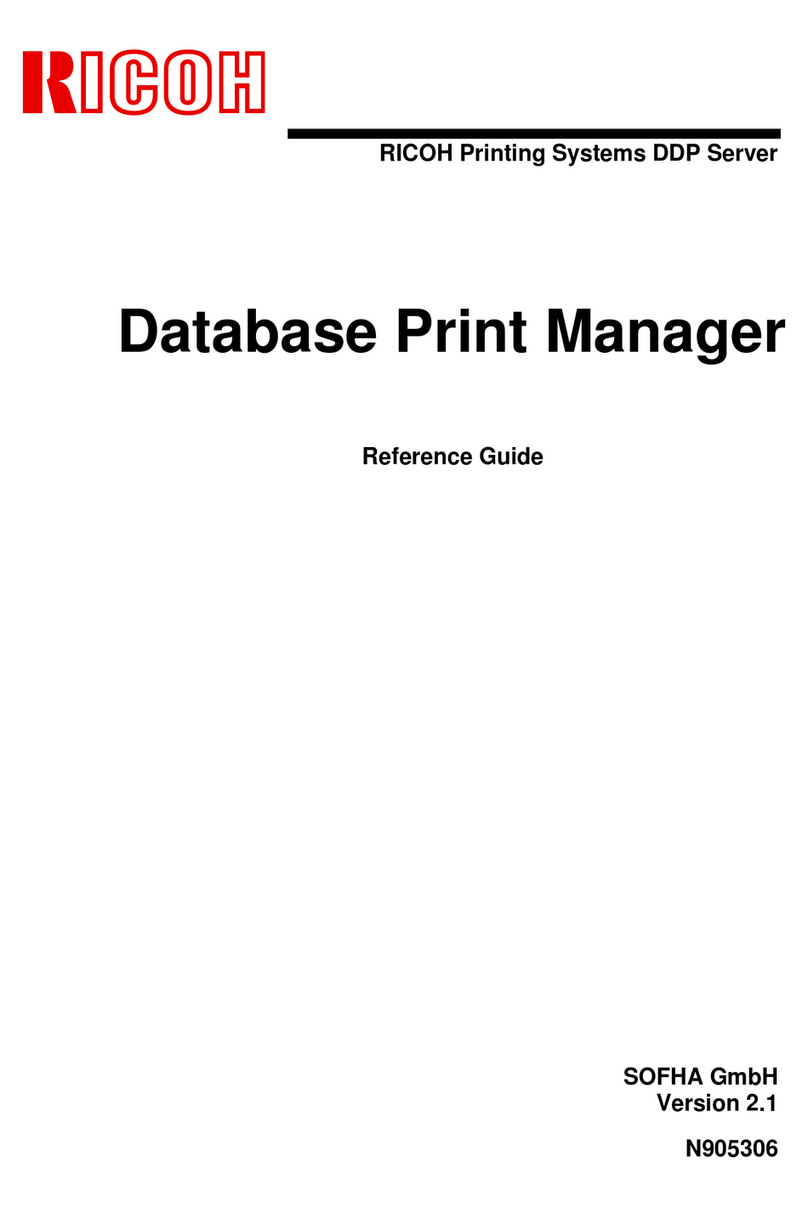
Ricoh
Ricoh N905306 reference guide
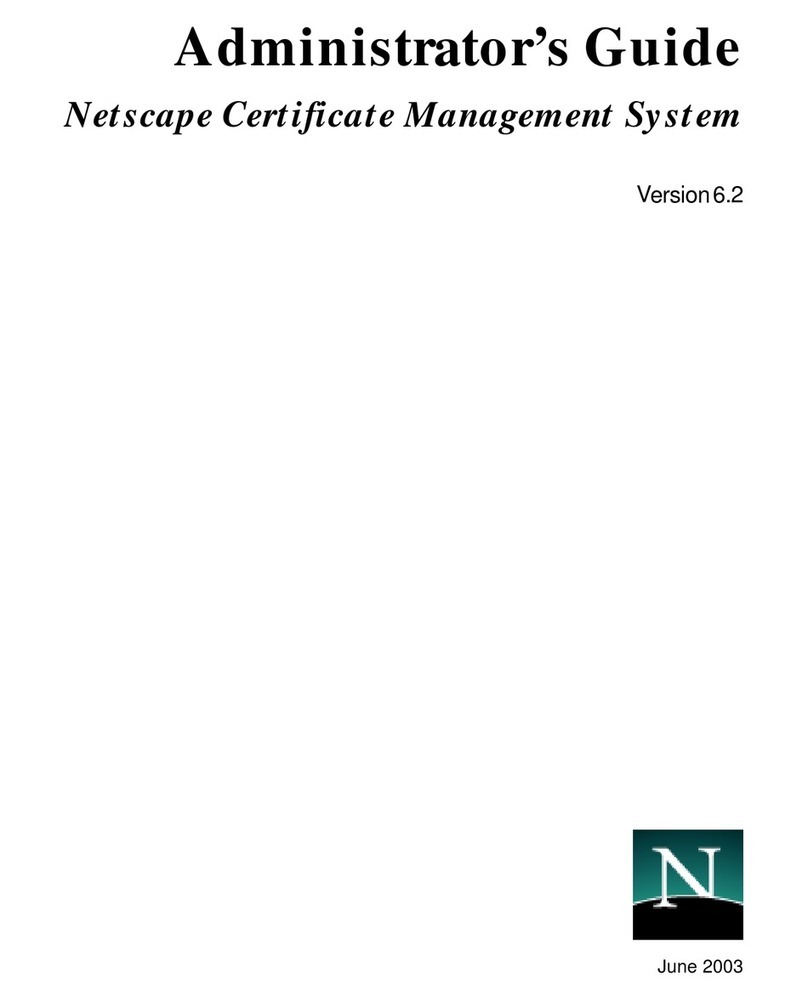
Netscape
Netscape NETSCAPE MANAGEMENT SYSTEM 6.2 -... Administrator's guide
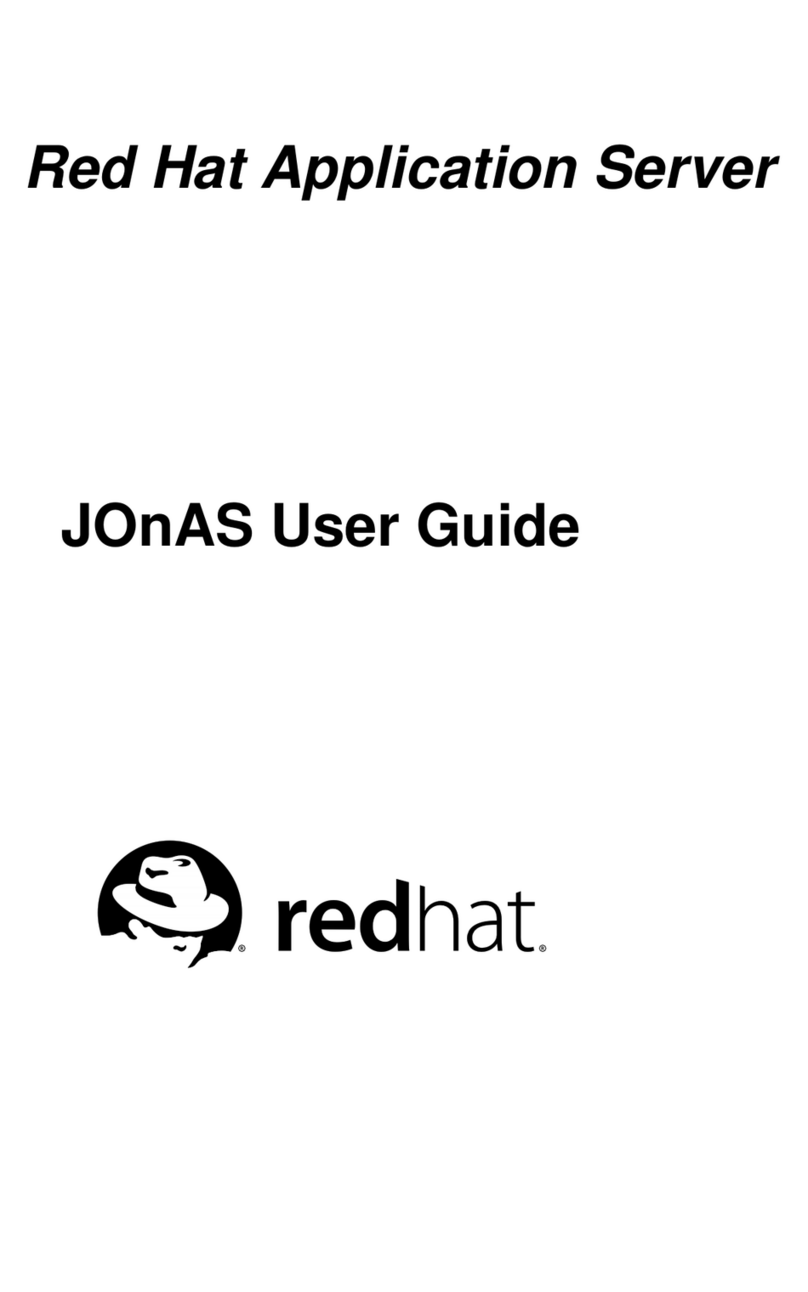
Red Hat
Red Hat APPLICATION SERVER - JONAS manual

ESET
ESET SMART SECURITY 4 datasheet
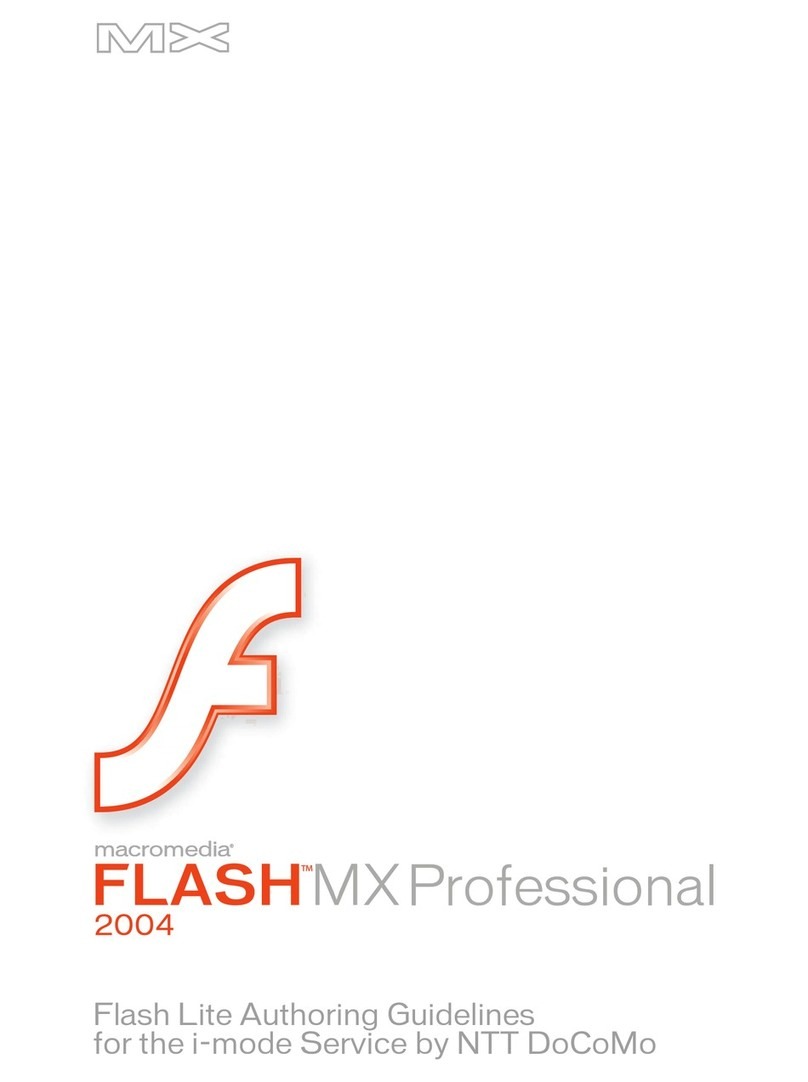
MACROMEDIA
MACROMEDIA FLASH MX 2004 - FLASH LITE AUTHORING GUIDELINES FOR THE I-MODE... Guidelines
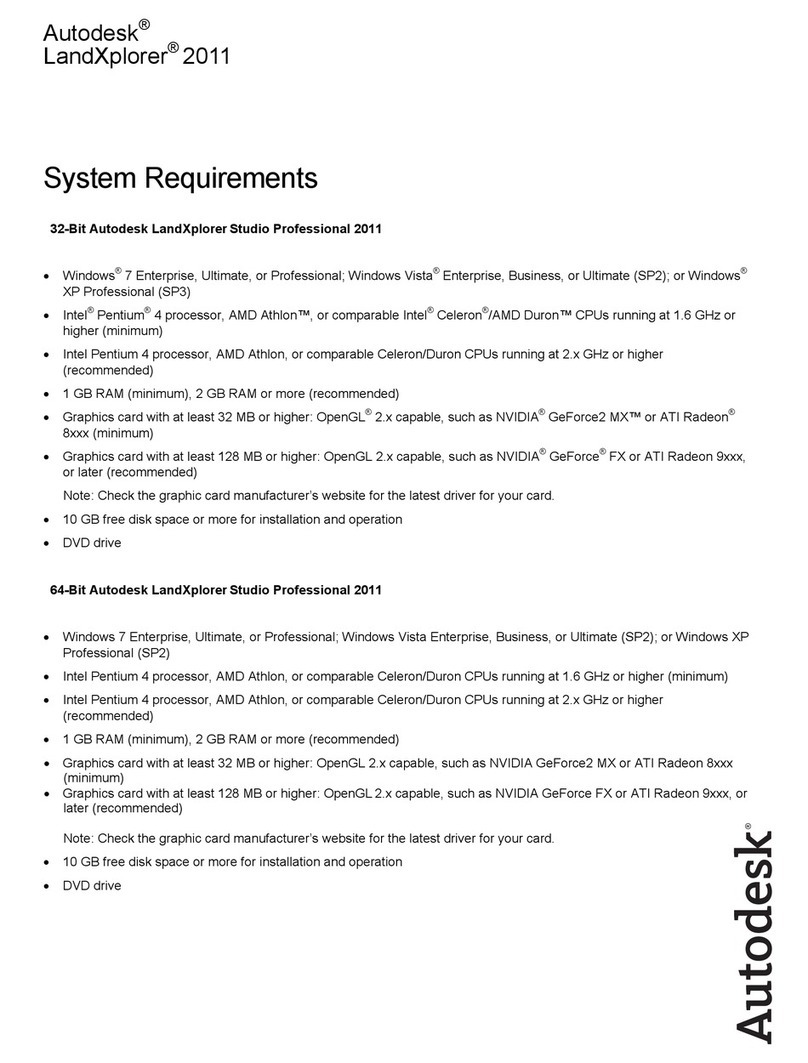
Autodesk
Autodesk LANDXPLORER 2011 - SYSTEM REQUIREMENTS manual
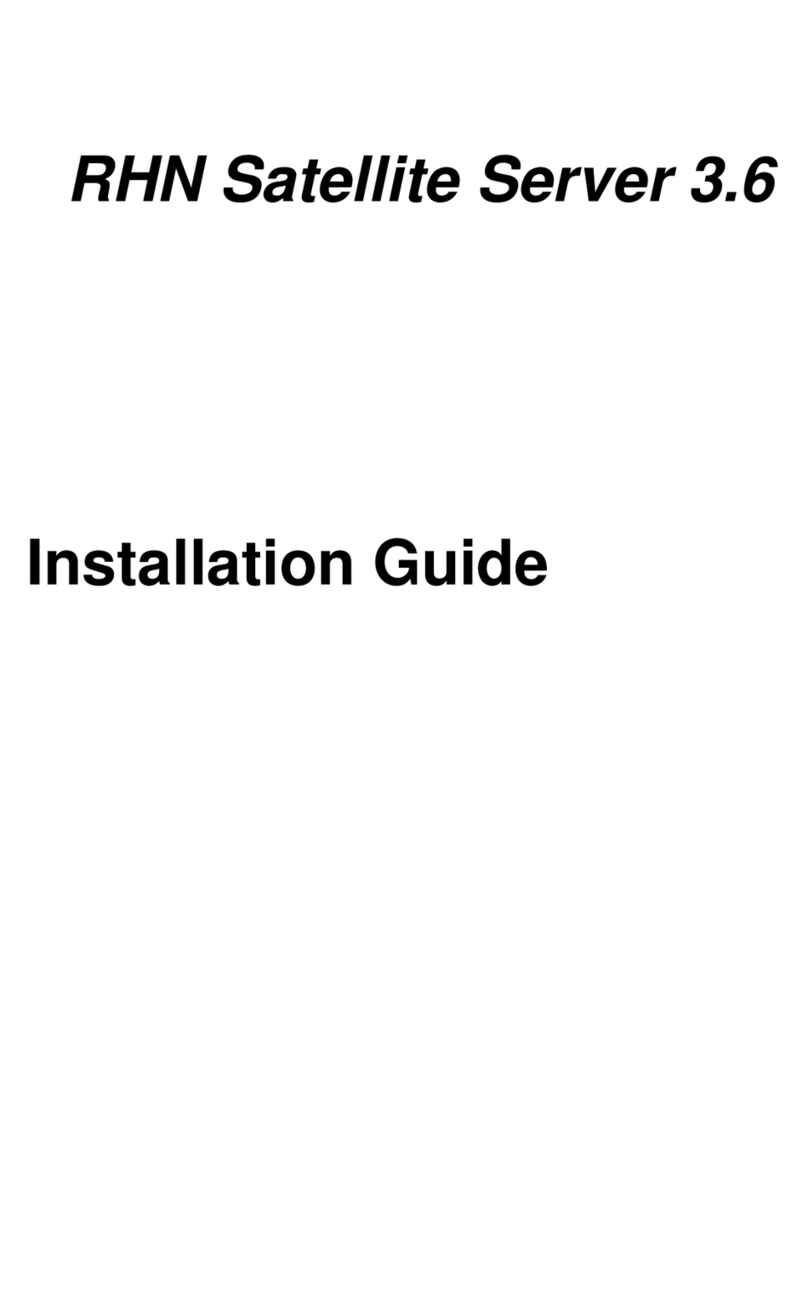
Red Hat
Red Hat NETWORK SATELLITE SERVER 3.6 installation guide

Dymo
Dymo LabelWriter DUO user guide
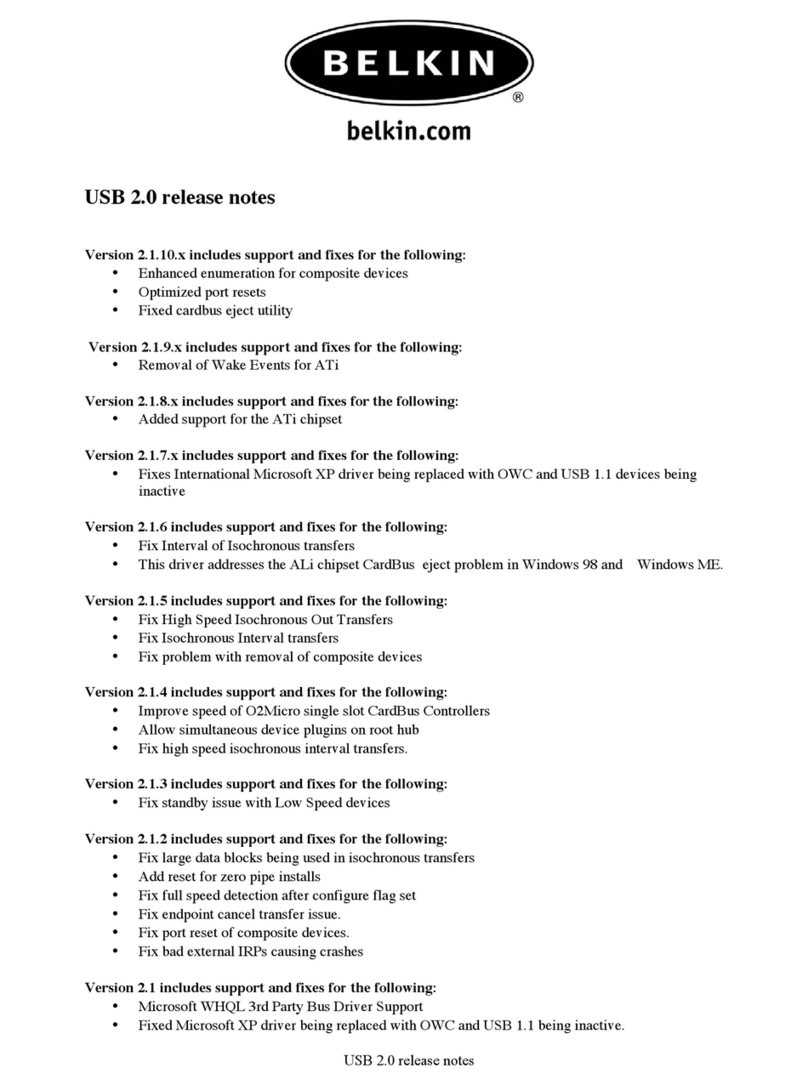
Belkin
Belkin USB 2.0 RELEASE NOTES release note
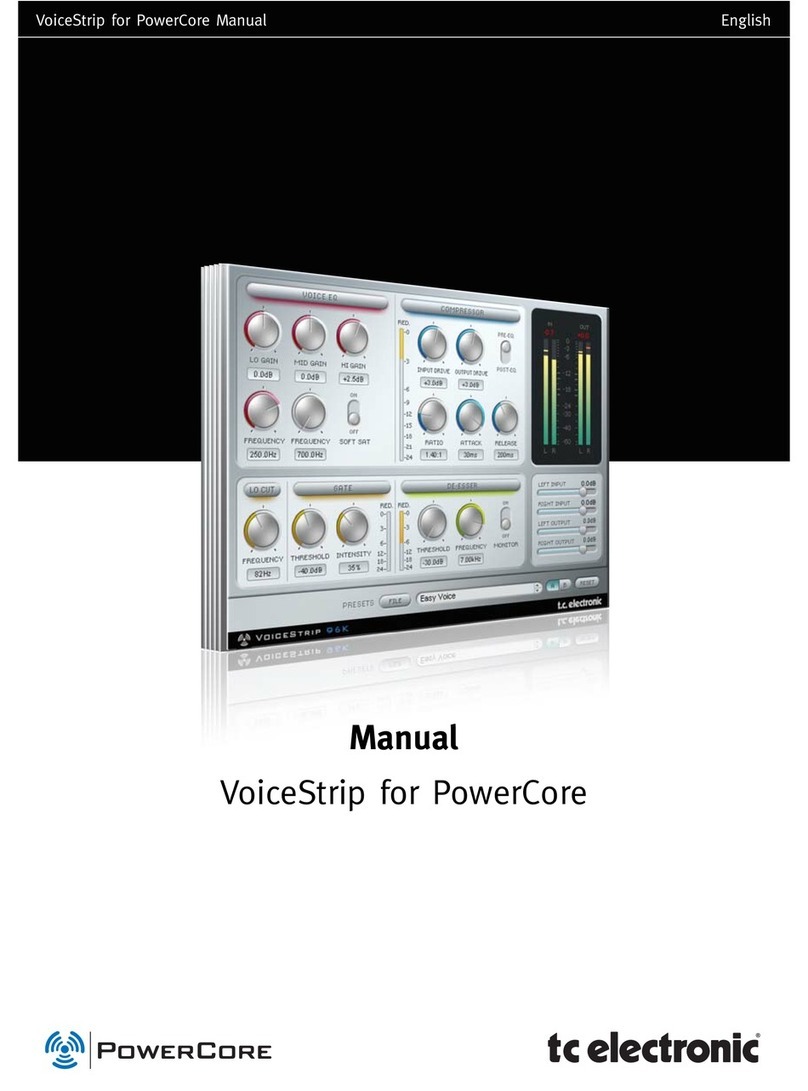
TC Electronic
TC Electronic VoiceStrip manual
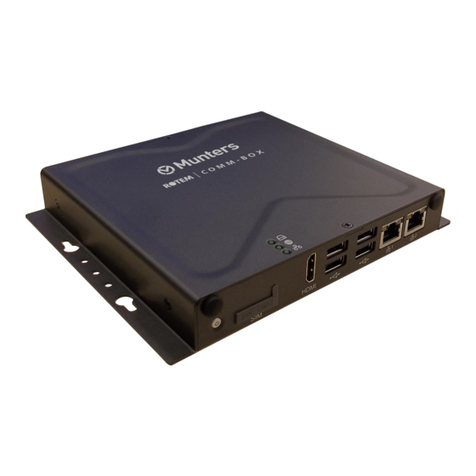
Munters
Munters GreenNet Installation and user manual
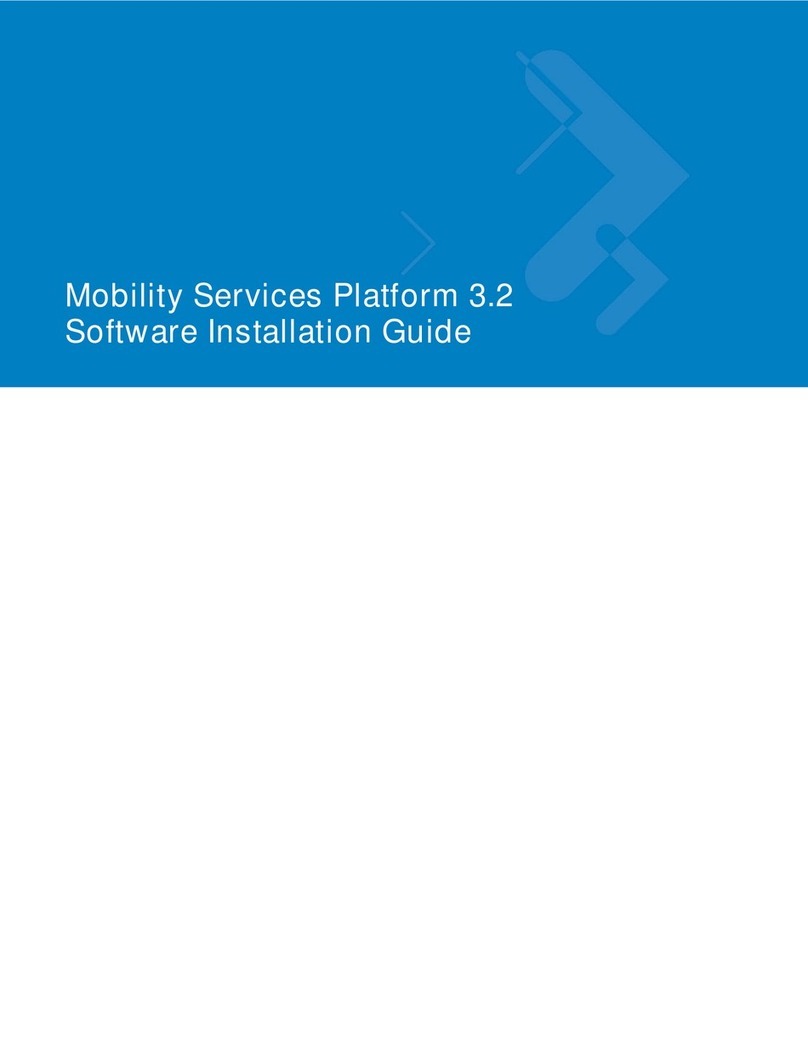
Motorola
Motorola MSP3-CNTRL-SW-100 - Mobility Services Platform Control... Software installation guide
